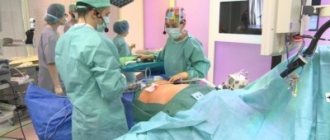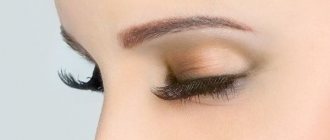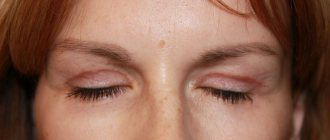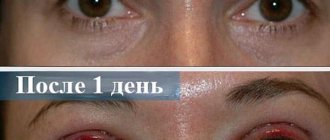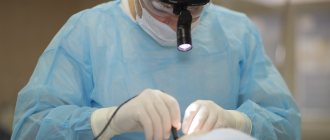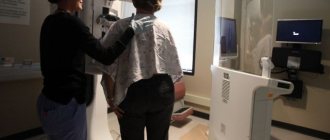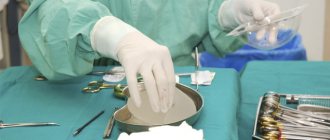Like any surgical procedure, blepharoplasty can have unpleasant consequences. It is imperative to take a responsible approach to choosing a clinic and a plastic surgeon who will perform the operation. However, even these actions do not guarantee a 100% positive result.
During the consultation before the operation, the doctor is obliged to inform the patient about the possible unforeseen consequences of blepharoplasty.
There are 3 common types of claims made by those undergoing surgery:
- Surgical . Development of blepharoptosis, postoperative swelling, eye asymmetry;
- Psychological . In case of unreasonably high expectations from the operation;
- Physiological . Scars, slow healing.
What is blepharoplasty
According to medical terminology, blepharoplasty means plastic surgery, the main purpose of which is the correction of the eyelids and periorbital area. The main indications for this type of surgery include sagging skin on the eyelids, the presence of “fat bags,” and drooping lower corners of the eyes.
Depending on the area of operation, the following types are distinguished:
- Blepharoplasty of the lower eyelids.
- Upper eyelid lift.
- Circular blepharoplasty.
- Exophthalmos.
- Correction of Asian eye shape.
- Canthopexy.
In aesthetic medicine, blepharoplasty is performed in two ways:
- Transconjunctival. It is performed exclusively on the upper eyelids. It involves making an incision on the inner area of the eyelid in the natural folds of the eyes. Through it, fatty hernias and bags are removed and the skin is tightened.
- Using a laser. A universal operation that suits almost everyone and has a number of advantages. Laser blepharoplasty is used to correct the upper and lower eyelids.
Blepharoplasty requires a mandatory hospital stay and the use of anesthetic drugs. The duration of the manipulation is determined by the volume and complexity of the work, but on average it is 2 – 3 hours. The rehabilitation period after surgery is 1.5 – 2 weeks.
When agreeing to undergo surgery, you must fully understand what blepharoplasty is and what the consequences may be after it is performed.
What problems does it solve?
The procedure helps to rejuvenate the face, eliminate age-related changes (deep wrinkles, bags, sagging around the eyes), a heavy and tired look, and improve the tone of the eye muscles. Also, it may be needed when:
- natural drooping of the eyelid, its asymmetry;
- the presence of aesthetic problems after accidents, injuries;
- eye shape that interferes with normal vision;
- the presence of fatty hernias;
- protrusion of the eyeball;
- excess skin on the lower and upper eyelids;
- turning up the eyelids, etc.
As you can see, blepharoplasty, in addition to the aesthetic aspect, is sometimes performed for medical reasons.
IMPORTANT: Injection blepharoplasty
Why complications may occur
Blepharoplasty belongs to the category of surgical interventions, after which negative consequences may occur. Their number and intensity depend on many factors.
The causes of postoperative complications after blepharoplasty are:
- Individual physiological characteristics of the body. The quality of the operation and the likelihood of complications are influenced by the presence of allergies, the location of blood vessels, and unforeseen reactions of the body during the formation of scars.
- Failure to comply with the surgeon’s prescriptions and recommendations by the patient during the preparatory and postoperative periods.
- Violation of surgical technique. As a rule, they occur when blepharoplasty is performed by a young doctor with minimal experience in performing similar operations.
- General surgical risks. Blepharoplasty is a traumatic type of surgery, which is performed on the thinned area of the periorbital region. To minimize the risk, in order to exclude contraindications to blepharoplasty, qualified specialists will refer the patient for examination.
In medical practice, there are cases when, after a successful operation and the absence of negative consequences, patients remain dissatisfied with the results. The main reasons in this case are the physiological characteristics of the body in the form of slow healing or high expectations from the operation.
Is it necessary to treat blepharoptosis after eyelid blepharoplasty?
As such, there is no medical or therapeutic treatment for postoperative ptosis. However, if it becomes a complication, and its degree increases from I to III, then after 8 days you should contact your attending ophthalmologist.
At the appointment, guided by the data obtained during the examination and history taking, they find out whether ptosis could be a consequence of taking any medications, previous diseases, or the result of heredity. In most cases, blepharoptosis is corrected using a reconstructive surgical method, that is, repeated surgery to eliminate the resulting defect.
The most common problems after plastic surgery of the upper and lower eyelids
Blepharoplasty is a traumatic type of surgery. Therefore, the likelihood of complications developing after it is very high. Taking into account various factors, experts identify a number of the most common problems from blepharoplasty. They are classified based on the reasons for their appearance.
With scarring
Plastic surgery to correct the eyelids involves excision of excess skin and fatty deposits. As a result of this, temporary sutures are formed.
The individual predisposition of the patient to the formation of keloid scars increases the likelihood of scars and cysts after surgery. If the neoplasms are small in size, then they are prone to self-resorption. Otherwise, surgery will be required to remove them.
You can restore the integrity of the skin at the initial stage through the use of ointments and hardware procedures. After several months, peeling or laser resurfacing will be required.
With functioning
Problems after blepharoplasty can also be functional. They manifest themselves in disturbances in the functioning of individual systems of the visual organs. Among these complications, the most common development is:
- Keraconjunctevita.
- Chemosa.
- Tears.
Functional complications include burning sensations and dryness of the mucous membrane of the eyes.
With aesthetics
Complications after blepharoplasty may be related to aesthetic appearance. An unsuccessful operation can provoke the development of complications in the form of:
- Blepharoptosis.
- Lagophthalmos.
- Eversion of the lower eyelid.
For many patients, such problems are the most terrible, since in addition to physiological pain they lead to dysfunction of a person’s psycho-emotional state.
Depending on the complications, to fully restore the functionality of the eyes and their aesthetic beauty, drug therapy, canthopexy or reoperation are performed.
Glass eye effect
One of the most common problems after lower eyelid blepharoplasty is the “glassy eyes” effect. The main reasons for this complication are:
- Removing too much skin.
- Violation of the surgical technique, which manifests itself in the absence of fixation of the canthal ligament.
- Formation of fibrous tissue in the postoperative period, which leads to inflammation.
- Anatomical predisposition.
- Loss of muscle tone and elasticity of the orbicularis muscle.
- Malnutrition of the fatty retina.
The effect of “glass eyes” after blepharoplasty can appear immediately after the operation or in the postoperative period. It causes not only aesthetic discomfort. This condition is accompanied by increased tearing, dry keratoconjunctivitis, burning of the eyes and pain in bright light.
Correction of such a problem is carried out exclusively through repeated surgery. It involves strengthening the ligamentous apparatus, reconstructing the lower eyelid by replacing the lack of tissue with a layer from the upper one. If necessary, NSAIDs and moisturizing eye drops are prescribed.
Early complications after plastic surgery
The etiology of early postoperative problems is associated with vascular damage, injury to delicate skin, or non-compliance with doctor’s recommendations during the preparatory and rehabilitation period. Modern aesthetic medicine identifies the following early complications after blepharoplasty.
Edema
Swelling after surgery during the first days is allowed. If the swelling does not go away for a week or more, then this condition is considered a complication and requires consultation with a surgeon.
The etiology of swelling is associated with minor vascular damage. Large volumes of blood are removed through their walls. This leads to swelling in the operated area and improves the regeneration process.
Hematomas
Hemorrhages after blepharoplasty are among the most common complications. They are formed as a result of damage to the integrity of blood vessels. Hematomas are classified according to the extent of the lesion into three types:
- Subcutaneous. Localized directly in the incision area.
- Tense. They are characterized by a large accumulation of blood at the site of skin excision.
- Retrobulbar. They are formed as a result of damage to large blood vessels that are located behind the eyeball.
Treatment of hematomas of any type is prescribed by the operating surgeon, taking into account the general state of health and the extent of hemorrhages.
Infections
Infection of the wound with pathogenic microorganisms can occur if sterility is not maintained during and after surgery, or if the patient has inflammation.
It manifests itself as redness of the suture and the area around it, local hyperthermia, pain and increasing swelling. At the initial stage, secondary infection is amenable to antibiotic therapy. The advanced form will require cutting the suture and cleaning the wound from the inside.
Tearing
Transconjunctival eyelid surgery is often accompanied by a complication in the form of increased lacrimation. With this etiology, lacrimation stops immediately after the swelling subsides.
If the problem has not been resolved, then the cause of its appearance must be sought in scarring. In this condition, narrowing of the tubules or displacement of the lacrimal openings occurs.
Seam divergence
The use of weak fabrics, non-compliance with the suture technique, increased swelling and inflammation of an infectious nature can lead to the sutures coming apart after eyelid surgery.
This condition requires immediate medical attention. Delayed care increases the likelihood of infection, wound opening, and severe scarring.
Ectropion
A complication of lower eyelid blepharoplasty can manifest itself in the development of ectropion. Lower eyelid inversion occurs as a result of excessive tissue removal.
Corrected by conservative or surgical methods. The presence of ectropion, in addition to aesthetic problems, can provoke the development of ophthalmic diseases.
Diplopia
One of the early complications of blepharoplasty is diplopia. Double vision occurs when the eye muscle is injured during surgery. As a rule, this condition goes away on its own within a month, but requires monitoring by an ophthalmologist.
Eyelid surgery is always accompanied by complications. If the outcome of the operation is favorable, they are minimal and go away quickly.
Rehabilitation period
Upon completion of surgical procedures, a tight bandage is applied to the patient's eyes. It is forbidden to remove it for the first 4-5 hours. After 5-7 days, the surgeon removes the sutures and fixes the condition of the skin. During this time, swelling and post-operative bruising should subside. Bruising in the operated area can persist for up to 30 days. But this does not mean that the patient will have to spend a whole month of his life in a hospital ward. It all depends on the body’s reaction to the intervention. In most cases, the patient can return to his usual rhythm of life after the stitches are removed. The only caveat is that you will have to devote much more time to your eyes than before plastic surgery. It is necessary to choose hypoallergenic cosmetics, avoid contact lenses, and wear sunglasses every day.
It is important to understand that the patient will experience pain for the first 7-14 days. Its intensity may vary. Some will feel slight discomfort, others will not be able to spend a day without pain medication. Any changes, unpleasant symptoms or suspicions should be reported to your doctor. The patient is prohibited from rubbing, scratching or even touching the eyes. The organs of vision need to be completely relieved of the load. Reading books, surfing the Internet or sitting in front of the TV may be prohibited. Check this aspect with your doctor. If all the rules are followed, the rehabilitation will be successful, and the result of the plastic surgery will please the patient for the next 10 years.
Best materials of the month
- Coronaviruses: SARS-CoV-2 (COVID-19)
- Antibiotics for the prevention and treatment of COVID-19: how effective are they?
- The most common "office" diseases
- Does vodka kill coronavirus?
- How to stay alive on our roads?
Late complications
At the end of rehabilitation, late complications of blepharoplasty appear. As a rule, they appear due to the lack of experience of the surgeon or due to the presence of individual characteristics of the body.
Ptosis of the eyelids
It manifests itself as drooping of the upper eyelid and the inability to open the eyes independently. The cause of this condition is associated with damage to ligaments and muscles. Blepharoptosis is treated exclusively by repeat surgery.
Cysts
Complications in the form of small neoplasms during blepharoplasty appear on the postoperative suture line. After plastic surgery, a cyst may resolve on its own, but there may be cases where operations are performed to remove them.
Keloid scarring
Keloid scars after blepharoplasty occur when the sutures come apart, the sutures are placed incorrectly, or there are individual characteristics of the body. Small scars may resolve on their own; larger ones will require additional surgery to remove.
Lagophthalmos
Characterized by a violation of the closure of the eyelids. The etiology of this complication is associated with excessive skin removal or due to a short period of time between the first and second blepharoplasties. Requires immediate permission, as it threatens the development of complete blindness.
Asymmetry
Incorrect suturing or disruption of the tissue scarring process after upper eyelid blepharoplasty leads to eye asymmetry. Also, in the presence of congenital asymmetry, eyelid correction can enhance this defect.
Increased pigmentation
Formed as a result of resorption of profuse hemorrhages. The accumulation of breakdown products in the subcutaneous layers can appear in the form of dark spots on the skin. You can get rid of hyperpigmentation in the operated area by using absorbable ointments and compresses.
Keratoconjunctivitis
One of the common complications of any eye surgery, which includes blepharoplasty, is keratoconjunctivitis sicca. After eyelid correction, dry eye syndrome can be easily cured with medications to restore the mucous membrane of the eyes.
Attentive attitude to your health after blepharoplasty, timely and correct treatment of early complications will help to avoid the development of later negative consequences.
Photo
In the photo below you can see the failed operation, comparing the appearance of the lower and upper eyelids before and after plastic surgery:
From special publications on our website you can also learn:
- What types and techniques of eye lift are there?
- How do you prepare for blepharoplasty and what are the stages of the procedure itself?
- What procedures can be performed after blepharoplasty?
- How long will the effect last after surgery?
What complications are temporary?
Eyelid correction involves tissue trauma and the use of special instruments. The specifics of the operation and the area of its implementation explain the manifestation of complications that affect not only the patient’s appearance, but also the functionality of the eyes.
Temporary complications after blepharoplasty appear immediately or after the first days after the operation itself. Mild and passing consequences are classified into the following types:
- Hematomas.
- Edema bags.
- Allergic reaction.
- Hypersecretory lacrimation.
They are characterized by mild symptoms and resolution on their own or with the use of medications.
Which ones require specialist help?
There are a number of complications that do not go away on their own, and at the same time increase the likelihood of developing various ophthalmological diseases.
These include:
- Ectropion of the eye.
- Blepharoptosis.
- Retrobulbar hematoma.
- Dry eye syndrome.
- Asymmetry of the organs of vision.
- Failure to close eyelids.
- Scarring of tissue.
- Seams coming apart.
Such consequences require immediate qualified assistance from specialists. In most cases, the beauty and functionality of the eyes cannot be restored without repeated operations.
The manifestation of any complications requires a consultative examination by a surgeon and, if necessary, an ophthalmologist.
Blepharoplasty: consequences of unsuccessful surgery
Conventionally, complications after surgery can be divided into:
- temporary complications of the early period that do not require repeated intervention and disappear on their own over time;
- complex, the occurrence of which requires repeated surgery or continued treatment.
The first group usually includes hematomas and swelling that occur in the early postoperative period. Such consequences are caused by injury to small vessels as a result of dissection of soft tissue. Hematomas will go away on their own; if you apply cold compresses, recovery will speed up.
Important! The presence of bruises may indicate that large vessels were hit. This condition requires immediate surgical intervention.
Swelling occurs after almost any blepharoplasty. Bags under the eyes, in most cases, disappear within a week, however, sometimes the recovery period can take up to three months.
In some cases, after blepharoplasty, tearing occurs. As a last resort, if it is impossible to correct the problem locally, probing of the lacrimal canal can be used.
It is possible to develop allergic reactions to the administered drugs and dressings. If necessary, the attending doctor prescribes antihistamines.
Preventive measures to avoid complications
The key to successful eyelid correction lies not only in the professionalism of the doctor. Half of the success can be safely assigned to the patient himself. Experts highlight the following preventive measures to avoid complications after blepharoplasty:
- Undergo a full examination before planning eyelid correction. This will allow you to accurately determine the presence or absence of contraindications for the operation.
- Do not start plastic surgery without an ophthalmologist's opinion.
- At the preparatory stage and in the postoperative period, strictly follow all medical recommendations and prescriptions.
- Limit physical activity and refuse to visit bath complexes, swimming pools and solariums for a period of 1.5 - 2 months.
- Minimize computer work and TV watching time.
- Protect your eyes from exposure to sunlight.
- Avoid using decorative cosmetics for at least 2 weeks.
- Eliminate from the diet foods that promote fluid retention in tissues and reduce the amount of water consumed.
- When sleeping, choose a horizontal position on your back and a flat pillow.
Choosing a trusted clinic and a qualified surgeon, with supporting documents, will minimize the likelihood of complications.
How to prevent an unsuccessful outcome?
The natural desire of the patient before undergoing surgery is to be able to insure against complications after the procedure. Therefore, we strongly recommend that you carefully consider the preparation of the operation and calculate all possible troubles. Most of the possible problems can be prevented; all you need to do is choose the right clinic and plastic surgeon.
Choosing the right doctor
The main task is to choose a surgeon who is a specialist in the area you need. With the right choice, the possibility of a negative outcome from the operation will be reduced to zero. A doctor with extensive experience and status simply cannot afford to make a mistake, and performs all his actions impeccably and with the utmost care. An experienced surgeon can calculate in advance all possible unpleasant consequences and will do everything to prevent this.
Important! If blepharoplasty is performed incorrectly, it will be impossible to completely eliminate errors. It is realistic to only correct the errors as much as possible during a repeat operation.
Anything associated with surgery in the eye area is surrounded by significant risks due to the fragility of eye tissue. In some cases, the problems may resolve on their own, but for the most part, repeat blepharoplasty will be necessary.
The importance of following recommendations
Immediately after blepharoplasty, the patient is sent to the ward, and a cooled bandage is applied to the eyes to reduce swelling and relieve pain. In the postoperative period, it is most important to strictly follow the recommendations of the attending physician, since the operation is accompanied by certain changes in the condition.
The patient must remain in bed for 24 hours after blepharoplasty. You can only lie on the back of your head to avoid injury and reduce swelling.
After the operation, you must follow these recommendations:
- use any medications only under the supervision of a doctor;
- temporarily avoid solid foods and chewing gum;
- do not be in direct sunlight;
- wash your hair for the first time only after consulting a doctor;
- women are allowed to apply makeup only 10 days after blepharoplasty;
- To avoid swelling, minimize the consumption of spicy and salty foods
- stop smoking;
- consultations with a doctor for a year after surgery, following all recommendations.
Remember! Each body is individual, so all prohibitions and recommendations should be discussed with your doctor in more detail.
If you do not follow the above recommendations, you risk reducing your blepharoplasty to zero and causing serious health problems.
What to do if a medical error occurs
If, after blepharoplasty, in the patient’s opinion, a medical error occurred, then this fact must be documented. For this:
- You will need to undergo examination and examination at an independent clinic specializing in eyelid surgery.
- Collect original documents certified by the seals of the clinic where the blepharoplasty was performed.
- Provide supporting documentation of the operation being performed by a specific surgeon.
- The original contract with the clinic for eyelid correction in the clinic.
It is almost impossible to independently prove the presence of a medical error after plastic surgery. Therefore, in this case, you will need the help of a qualified lawyer. If you have the originals of all documents confirming that blepharoplasty was performed in the blade, the percentage of positive outcomes in litigation increases.
What can a patient claim?
If the procedural case regarding medical errors after unsuccessful blepharoplasty is carried out correctly, the patient can claim:
- Repeated blepharoplasty.
- Correction of negative consequences, both physiological and aesthetic.
- Completion of a rehabilitation course.
- Compensation for moral and material damage.
- Termination of the surgeon's medical practice and deprivation of the clinic's license to perform plastic surgery.
Don't be afraid to seek the help of lawyers. Often such cases end in favor of the patient. The clinic or doctor provides complete recovery after surgery, maintaining its positive reputation.
Reviews
- Olga, 47 years old. I had circumferential blepharoplasty done a year ago. After the operation, I followed all medical recommendations. It was not possible to avoid bruising and swelling. The stitches were red and itchy for a long time. The doctor prescribed ointment for the stitches and lotions so that the hematomas and swelling would go away faster. 3 weeks after the correction, the consequences completely disappeared. I'm happy with the result.
- Anna, 35 years old. Blepharoplasty was unsuccessful for me. Immediately after the operation, the asymmetry of the eyes was clearly expressed, but the doctors said that everything would be restored in 3 months. I didn’t see the desired result, I regret that I decided to have the operation, since there is no reason to carry out a second correction.
- Eva, 51 years old. 2 years ago I had blepharoplasty, the consequence of which was the inability to close my eyes. Visiting specialists at various clinics did not bring any results. At a consultation at the eye institute, chronic blepharitis was diagnosed. There is no treatment, only repeated surgery or supportive drug therapy. I filed a lawsuit against the clinic; if the outcome is successful, they will pay for me to have a second operation.
A plastic surgeon talks about the consequences of blepharoplasty:
How to prepare for plastic surgery?
Correcting your appearance is a long process that requires planning and certain preparation. First of all, the patient should undergo diagnostics to exclude contraindications. For a surgeon, the smallest aspects of health are important because they determine how the body reacts to an intervention. If a problem is found in one or more departments (illness/infection/injury/disputable symptoms or test results), the patient is sent to a specialized doctor. The doctor prescribes corrective therapy, monitors its effectiveness and decides on the advisability of aesthetic surgery. If no contraindications are identified, the date of the operation is agreed upon with the patient.
Surgery always carries high risks. The client may not like the result or may disappear within 1-2 years. The plastic surgeon is obliged to provide complete information to the patient and offer possible alternatives. Only after discussing all the nuances can the operation begin.
